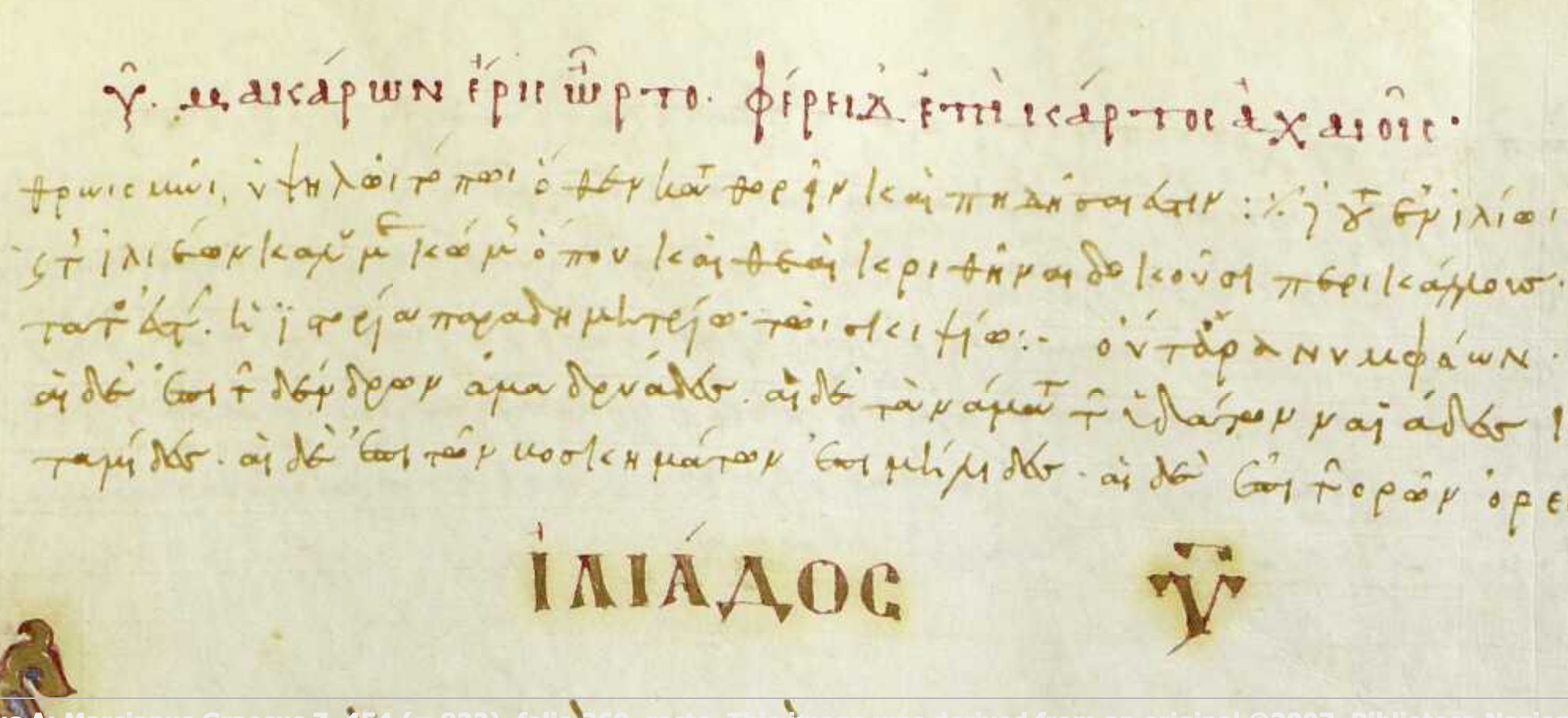
The Homer Multitext annual summer seminar is set to begin July 5th at CHS! As we close in on finishing our complete edition of the text and scholia of the Venetus A manuscript of the Iliad, we will turn our attention to Iliad 20, a book that seems preoccupied with the mythological and poetic tradition, and things happening at the wrong time. Read about Iliad 20 in the latest post on our research blog, here.
The Homer Multitext is an interdisciplinary project that brings together conservators, photographers, and researchers from a variety of fields in the Humanities and Computer Science and from institutions across the United States and Europe. Mary Ebbott and I are the project’s co-editors, but we are partners in all aspects of the project with the project’s information architects, Christopher Blackwell and Neel Smith. Douglas Frame, Leonard Muellner, and Gregory Nagy are associate editors. The Homer Multitext seeks to present the textual transmission of the Homeric Iliad and Odyssey in a historical framework that accounts for the fact that these poems were composed orally over the course of hundreds, if not thousands of years by countless singers who composed in performance. When the tradition in which these songs were composed was flourishing, no two performances were ever exactly the same. Our historical sources still reflect such multiformity, which is natural and expected in an oral tradition, but scholarly editions in print typically obscure rather than highlight these natural variations. Using technology that takes advantage of the best available practices and open source standards that have been developed for digital publications, the web-based Homer Multitext offers free access to a library of texts and images and tools to allow readers to discover and engage with the dynamic nature of the Homeric tradition. The project publishes high-resolution images of the most ancient documents that transmit the Iliad and Odyssey (including five of the oldest Medieval manuscripts that preserve the Iliad) together with edited transcriptions of their texts, including their accompanying scholia (marginal commentary derived from ancient scholarship on the poems). The project is supported by the University of Houston’s Research Computing Center and Harvard University’s Center for Hellenic Studies.
Our editorial work thus far has been accomplished by teams of undergraduates working with professors, who are trained at an annual two week long summer seminar hosted by the Center for Hellenic Studies. Students at the seminar are introduced by Casey Dué, Mary Ebbott, and guest faculty to the theoretical background of the project and its implications for our understanding of Homeric poetry, and they are trained by project architects Neel Smith and Christopher Blackwell and project manager Stephanie Lindeborg in our editing procedures. The students then work with faculty in teams to create an edition of the text and scholia of a book of the Iliad during the seminar. After the seminar, students return to their home institutions and continue to edit assigned manuscript folios together with their faculty mentors. It is safe to say that the vast majority of new discovery in connection with the Homer Multitext is made by undergraduate researchers, who regularly present at national and international conferences. Since 2014, seven Homer Multitext undergraduate researchers have been awarded Fulbright fellowships to continue their research after graduation.
This summer, as we do every summer, we’ll remove the bindings so to speak from the medieval manuscripts and fully examine their contents, study surviving papyrus fragments in all their multiform messiness, and try to visualize without judgment the Iliad known to Plato and Aeschines. The attested multiforms of the Iliad give us an opportunity to know and appreciate a wider range of performance traditions for this remarkable poem than most of us have been taught to do. Although our attested multiforms derive from the later stages of the evolution of the poem, even so they give us a glimpse of the very long history of the text, access to even earlier Iliads, and a greater awareness of the mechanisms by which such a poem could be composed in performance.
Casey Dué Executive Editor Center for Hellenic Studies
-
Fellowships
- Fellowships in Hellenic Studies
- Early Career Fellowships
- Summer Fellowships
- CHS-IHR Joint Fellowship
- Current Fellows in Hellenic Studies
- Previous Fellows Previous Fellows – Chronological Lists
